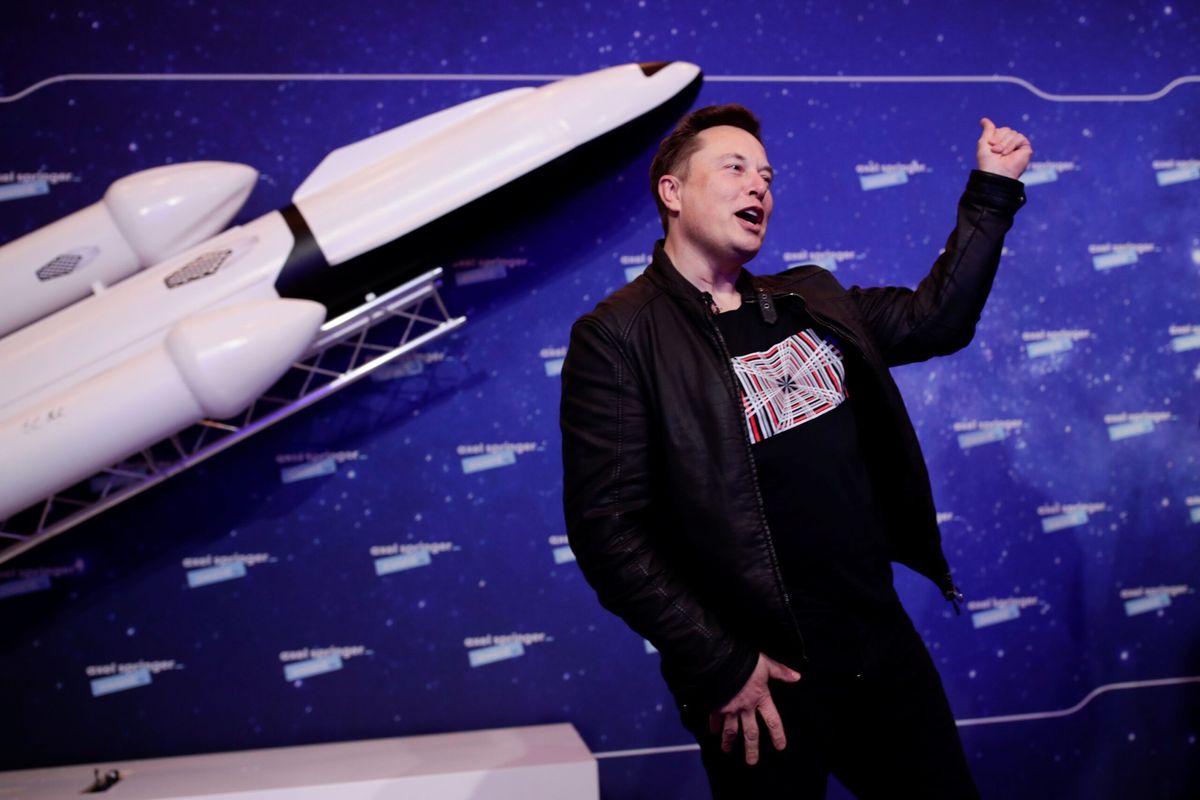SpaceX is looking to launch the world’s first all-civilian spaceflight as early as 2021

A few minutes every morning is all you need.
Stay up to date on the world's Headlines and Human Stories. It's fun, it's factual, it's fluff-free.
Monday’s announcement of the planned commercial spaceflight was dampened a bit the following day, when a prototype of SpaceX’s flagship space vessel, Starship, crashed and exploded upon landing.
By the end of 2021, it is possible that the first fully commercial spaceflight will have taken place, marking a new phase in humanity’s exploration of outer space. At least, that’s the goal of SpaceX and its billionaire chief executive officer, Elon Musk, who announced on February 1 that the company intended to launch an orbital spaceflight completely manned by civilians, possibly by the end of this year.
While civilians have flown to space before, this multiday flight would be the first to have no government-employed astronauts onboard. The mission will be led by Jared Isaacman, an American billionaire, but the three other members of the team have yet to be announced.
Musk has long stated his goal for SpaceX is to make spaceflight cheaper, while also providing a potential escape hatch for humanity if the earth becomes uninhabitable. To that end, SpaceX has been focusing on perfecting rockets that can land after being launched and then be reused. In February 2020, SpaceX announced its goal of being in the “space tourism” game by the end of 2021.
Monday’s announcement of the planned commercial spaceflight was dampened a bit the following day, when a prototype of SpaceX’s flagship space vessel, Starship, crashed and exploded upon landing. Though this was the second such explosion for the Starship prototype in as many months, the company remains optimistic for their ambitious goals.
The flight of Inspiration4
In the announcement of its planned launch, SpaceX revealed the name of the ship: Inspiration4. The Inspiration4 will be a Falcon 9 vessel, described by the company as an “orbital class rocket capable of reflight.”
SpaceX has touted the “reusability” of the Falcon 9 vessels, stating “Reusability allows SpaceX to refly the most expensive parts of the rocket, which in turn drives down the cost of space access.” The Falcon 9 is capable of carrying both people and “payloads” (e.g. equipment, supplies). It is the first manned rocket that, at least theoretically, can be launched multiple times.
The exact date of the flight has not yet been determined, but the announcement states it will occur “no earlier than the fourth quarter of this year.” When the mission does take place, it will launch from NASA’s Kennedy Space Center in Florida and conclude with an ocean landing off the coast of Florida. The mission will last several days and include multiple 90-minute orbits around Earth.
The crew of Inspiration4
Jared Isaacman, who is the founder and CEO of Shift4 Payments, a payment processing company, has already been named as the leader of the mission. Isaacman is a jet pilot who can fly commercial and military aircraft. He is also the founder of Draken International, a private company that provides tactical fighter aircraft and training to pilots.
Isaacman represents one of the four “pillars" of the mission: Leadership. The other three pillars are Hope, Generosity and Prosperity. While the other crew members who represent those pillars have not been announced, Hope is said to be an ambassador of St. Jude Children’s Research Hospital. The mission will raise money and awareness for St. Jude, which seeks cures for children’s illnesses.
The Generosity pillar will be filled by someone who has donated US$10 or more to St. Jude, while Prosperity will be an entrepreneur who has used Shift4 to handle their business payments.
The crew of civilians will be trained for spaceflight and operating in zero gravity. They will also receive training in emergency preparedness and rigorous physical and stress tests.
The crash of Starship SN9
A major part of all scientific advancement is trial and error and so it has been for SpaceX. While the company has successfully launched and landed multiple rockets, including landing its 50th rocket in March 2020, the company has had its share of public misfires.
On February 2, the flight of SpaceX’s Starship spacecraft ended in an explosion, or in the parlance of the company’s description of the flight, a “RUD” (rapid unscheduled disassembly). The explosion of SN9 in Boca Chica, Texas came almost two months after the SN8 experienced the same fate. The SN10 waits in the wings for its chance to launch and, hopefully, land.
At the time of the SN8 explosion, Musk took the setback in stride, tweeting, “Mars, here we come!!” Indeed, SpaceX’s write-up of Starship SN9’s high-altitude flight test on Tuesday focuses more on what was accomplished and learned from the flight than the crash:
“These test flights are all about improving our understanding and development of a fully reusable transportation system designed to carry both crew and cargo on long-duration, interplanetary flights and help humanity return to the Moon, and travel to Mars and beyond.”
Which is to say, though an explosion is not the desired ending for any spaceflight – certainly not one with human passengers – these test flights are all part of a process that could result in regular civilian space travel being commonplace within a generation.
Have a tip or story? Get in touch with our reporters at tips@themilsource.com




Comments ()